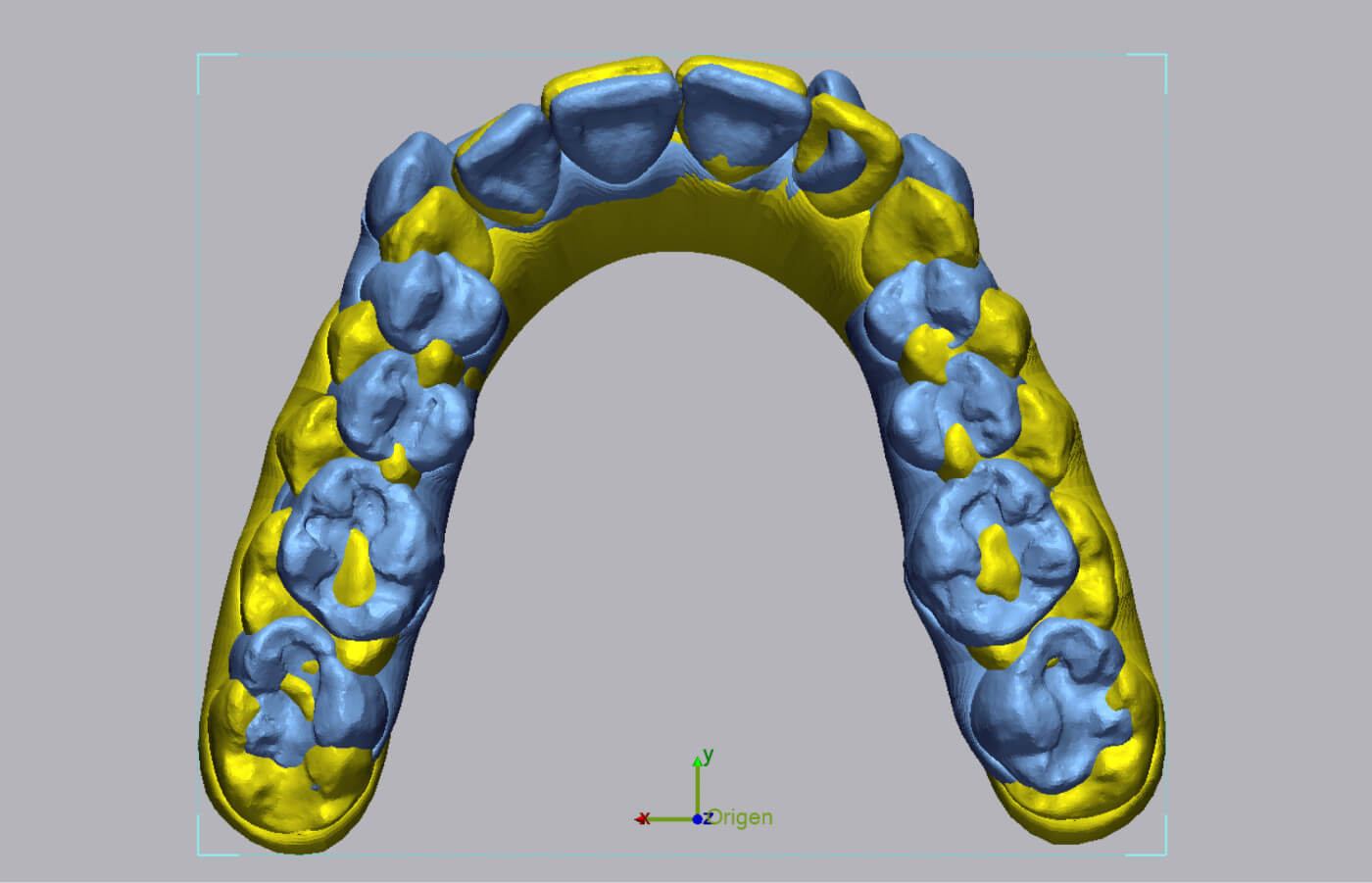
They may be invisible, but they’re everywhere. Clear aligners quickly became the orthodontic treatment of choice for mild teeth crowding since their first appearance on the market, 25 years ago. Today their popularity eclipses the traditional braces, and the reasons are obvious: they’re made of a transparent plastic that’s much less noticeable.
Whether patients see the desired result within the expected time depends, among other factors, on the ability to correctly predict tooth movement with a virtual program called ClinCheck Pro.
This predictability of protocols is the research topic of orthodontist Cristina Menéndez. She made her first foray into this area during her master’s degree, when she compared the movement of teeth predicted by Invisalign’s treatment plan and the actual results. She is currently working on an expected study with 100 patients with the same goal – testing the predictability of the protocol.
"Over the years, Invisalign has developed better treatments, such as for Class II malocclusions. They created a protocol to correct upper molars by sequential distalization, a procedure in which the aligners move tooth by tooth backwards," Menendez explains.
However, the field of orthodontics hasn’t proven the efficacy of this treatment. “There was no analysis of the molar changes induced by aligners during this treatment in adult patients.” Menéndez decided it was time to change this.
“My main objective was to check if the movements predicted by ClinCheck Pro, the software used to plan Invisalign treatments, are going to be reproduced intraorally,” the orthodontist explains.
She wanted to use state-of-the-art digital tools to measure the changes, so she opted for 3D scans and 3D metrology software Geomagic Control X.


Menéndez superimposes 3D images of teeth before and after the treatment in Geomagic Control X to determine how well the protocol predicted movement
To check how well ClinCheck Pro predicted teeth movement, she would assess the upper first molars in the three planes of space. She carried out a retrospective analysis on a sample of 41 patients of both sexes.
She found that the aligner treatment has shown good vertical control over the upper first molar during distalization, avoiding extrusion of the mesiobuccal cusp.
Automated alignment with Geomagic Control X
To analyze the 3D changes of the upper first molar in patients, she superimposed virtual models before and after the treatment with Invisalign. The superimposition was carried out with the "Best-fit" method, a tool of the Geomagic Control X software.
The overlay method in Oqton’s software comes in handy when evaluating orthodontic treatment. “Instead of a person having to align images captured by 3D scanning, Geomagic Control X uses an algorithm to do it automatically. The alignment algorithm will minimize the mesh distance error and distribute the errors evenly between the positive and negative deviations,” she explains.
Menendez chose Control X because many research articles involving alignment methods claimed that its Best-fit capability resulted in significantly smaller alignment errors and more realistic measurements than any other software. She particularly liked that with Control X she could obtain more precise reference points and evaluate anteroposterior, as well as transverse and vertical movement of teeth.
Her initial findings hold a lot of promise for both orthodontists and patients. “The study could help orthodontists to predict tooth movement better and to achieve complete teeth correction, without wasting time. Also, these results would teach us to avoid undesired movements that we have to correct later on. Overall, this could help us develop a more accurate and advanced orthodontic protocol.”
For her second research project, currently underway, Menéndez broadened the scope. The analysis encompasses anterior teeth as well as the upper molars to get a complete understanding of the treatment. She also aims to perform a three-year post-treatment review of these patients to determine the stability of the treatment. Geomagic Control X’s algorithms continue to play a vital role in this endeavor.
If you want to learn how to automatically align 3D scans using the Best Fit capability, follow our tutorial below.



